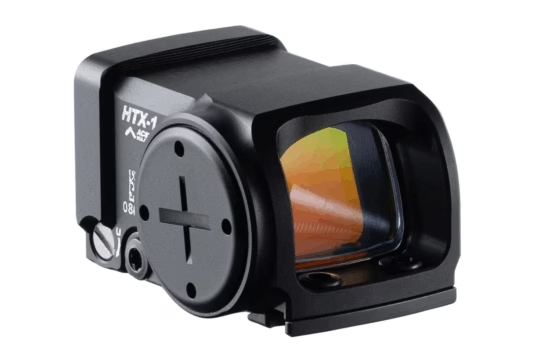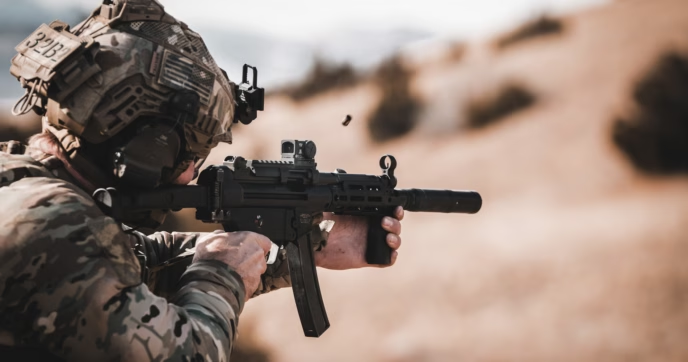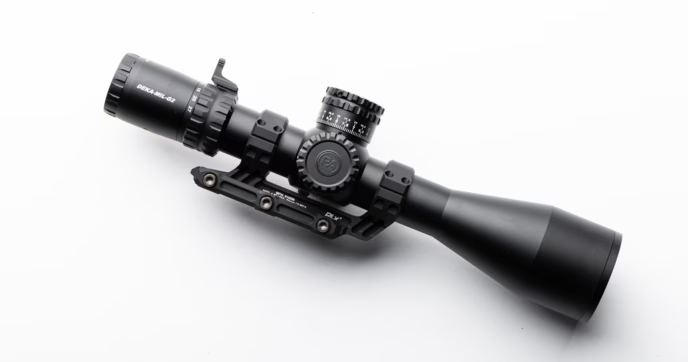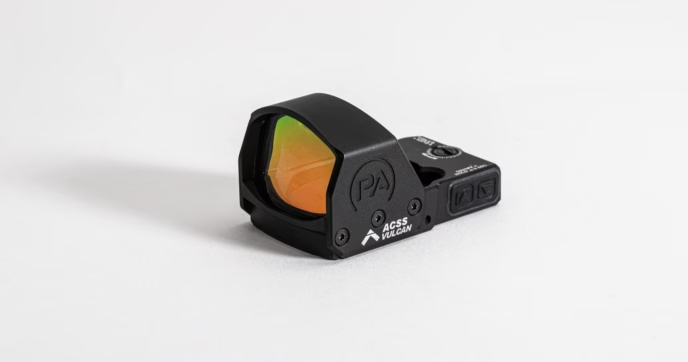Over the last few decades, pistol sight technology has developed rapidly. It wasn’t too long ago that the only sight options available for handguns were iron sights, with bulky laser sighting units being the only other alternative. Today, modern pistol optics are very different from what was previously available, as there is now a vast array of optics to choose from, including a multitude of reflex sights.
With the current range of mini-reflex sight options being so vast, many newcomers often assume picking one is an easy task, however this isn’t always the case. Despite appearing like a simple decision, if you don’t know what you’re looking for, it can quickly become a rather complex endeavor.
As such, it’s important to take a step back and really evaluate what you want out of your optic. For the most part, features such as open- or closed-emitter designs and reticle configuration are usually some of the first things enthusiasts think of before shopping for an optic. And while these are all critical considerations, one that often goes overlooked is the optic’s window size.
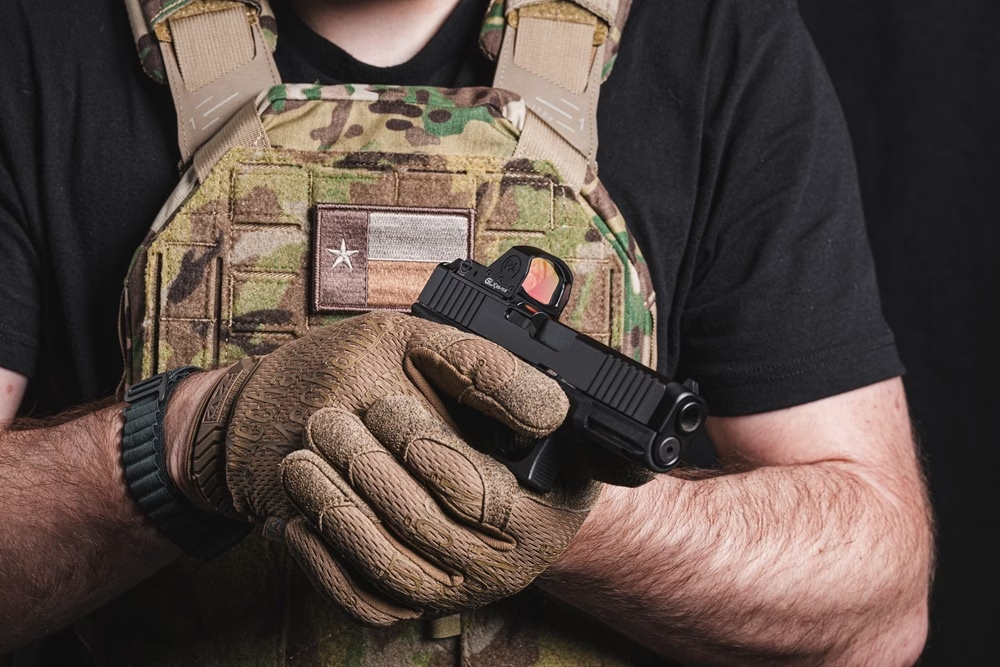
Red Dot Window Size
So, what exactly do we mean when we say, “window size”? An optic’s window size is a term often used to describe the size of its objective lens, the lens on which light from the emitter diode is collimated onto to create your reticle image. This lens is a vital component for all reflex sights, including both mini-reflex and pistol red dot sights—and since you’ll be looking through this lens to use your reticle to aim, the actual size of the lens is a key determinant of its performance.
Like with many other firearm accessories, achieving the right balance of performance is key. As such, it’s important to recognize that different objective lens sizes offer different advantages.
Benefits of Larger Red Dot Window Size
Quicker Target Acquisition
Simply put, a larger objective lens can have a profound effect on your target acquisition speed. Reflex sights, compared to your pistol’s iron sights, which need to be aligned for proper aiming, are far easier to aim with, assuming your optic is zeroed, of course. This is a core benefit that’s provided by all reflex sights, but, with a larger objective lens, you’ll also have a wider field of view, giving you a more a complete image of your target and its surroundings, which is extremely beneficial in dynamic applications like what’s seen in competitive and duty applications, but we’ll touch more on that below.
The larger window is also more forgiving when aiming. You’ll have more room to adjust your head position, and the reticle will be more visible at differing angles, making it easier to shoot accurately from awkward angles, if the situation calls for it.
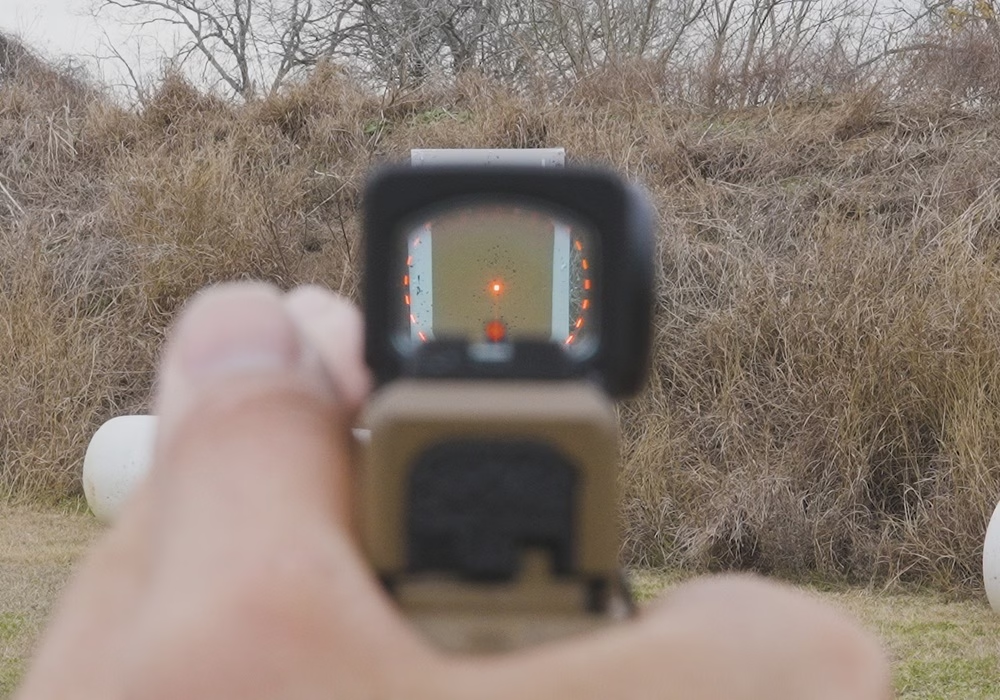
Wider Field of View
As highlighted above, your field of view, or FOV, is an important facet of reflex sights. FOV refers to how much of the surrounding area you can see when looking through your optic. Much like the concept of quick target acquisition, reflex sights, having no magnification, generally offer a wide FOV, making them exceptionally agile in dynamic applications. But optics with larger objective lenses, by design, typically afford a wider FOV. However, it’s important to note that just because your optic has a large sight window, doesn’t mean it’s automatically going to have the widest FOV possible, as this is dependent on the type of optic you choose.
For pistols, there are two types of reflex sights to choose from: closed- and open-emitter reflex sights. There’s a lot to cover when going over closed emitter vs. open emitter optics, but the latter offers the widest FOV. Closed emitter pistol red dot sights, by design, have more constricted FOVs since the optic body shrouds the objective lens. This isn’t to say that they’re a terrible choice by any means, as there are several closed-emitter pistol red dots with large objective lenses and wide FOVs, it’s just that they fall short in this regard when compared to open-emitter optics. We recommend checking out the article above to get a better idea of the pros and cons of each possibility.
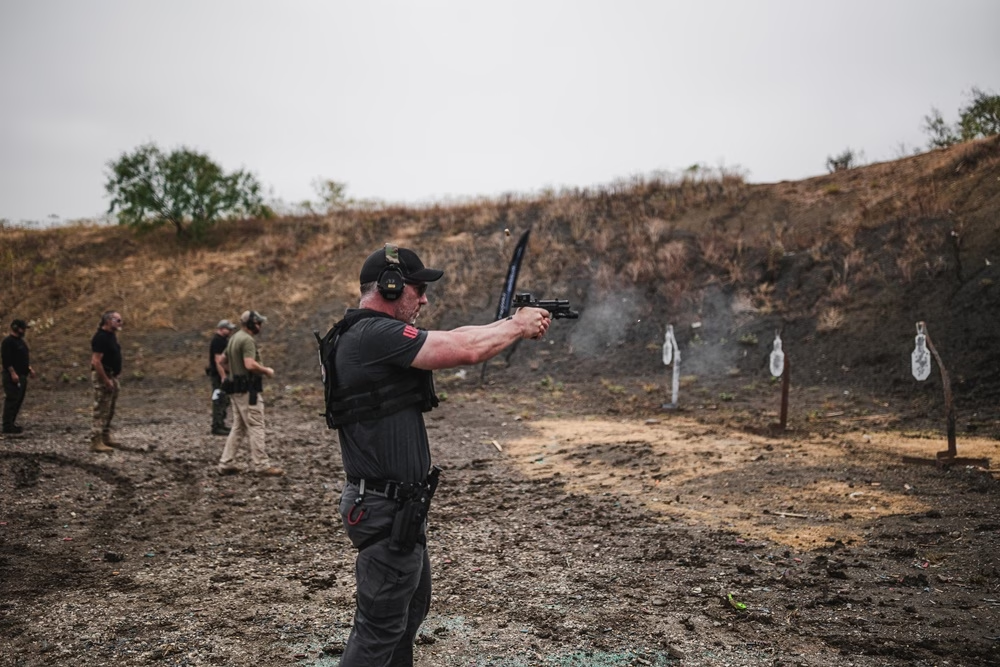
Better Situational Awareness
Being able to fully see all that’s around you while still maintaining a proper bead on your target is crucial whenever you’re shooting, and larger objective lenses with their wider FOVs offer this.
Take competitive shooting for instance. In such an environment, you’ll likely be engaging multiple targets, including moving ones, while also having to maneuver around various obstacles and cover. With a larger objective lens, it will be easier to see what’s around you, allowing you to move quickly and efficiently when time is of the essence. In a non-competitive environment, this is still crucial, as being aware of your surroundings is one of the primary fundamentals of gun safety, i.e.: being sure of your target, as well as what’s around and behind it.
Drawbacks of a Larger Red Dot Window Size
Despite having several benefits, a larger red dot window size isn’t necessarily the greatest option for every application. So, depending on what your handgun’s primary purpose is going to be, you’ll need to consider their drawbacks.
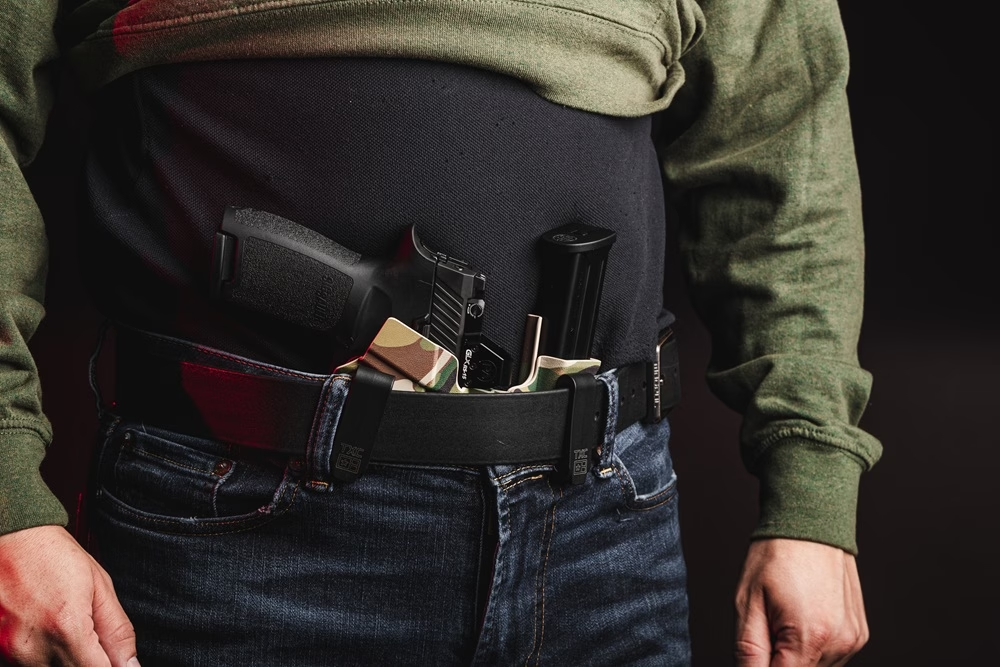
Increased Optic Weight
Now, to be fair, this is more of a nitpick than a con as both mini-reflex sights and enclosed pistol red dot sights usually don’t weigh more than a few ounces. However, having a larger window means the optic itself must be larger to accommodate it, which will increase its overall weight.
Again, this isn’t to say that that optics with large sight windows are unwieldy by any means but depending on how you want to configure your pistol, those ounces can add up, especially once you factor in loaded magazines and other accessories like weapon lights or compensators. This isn’t really an issue for competitive shooting or duty applications, but for concealed carry, the added weight can make carrying your pistol a bit uncomfortable if you don’t have the right belt or holster.
Bulkier Design
Being larger, reflex sights with larger objective lenses aren’t always the best option for concealed carry. While we mentioned weight and comfort above, you also need to take their added bulk into consideration too. A common issue enthusiasts run into when carrying concealed pistols is printing—when the outline of your pistol is visible through clothing. The part of a pistol that’s going to print the most is the grip, since it juts out to the side when holstered, and the same is true for reflex sights.
A larger optic is going to present a greater change to your pistol’s profile when holstered, and although it isn’t going to be as difficult to conceal as your pistol’s grip, it can still make concealment a challenge. To overcome this, it’s paramount that you choose the right holster designed for your handgun and a rigid belt for optimal support. Having them will keep your pistol closer to your body and prevent your holster rig from hanging loosely. Plus, if you conscientiously dress around your handgun with looser fitting clothes, you’ll have an easier time concealing your pistol.
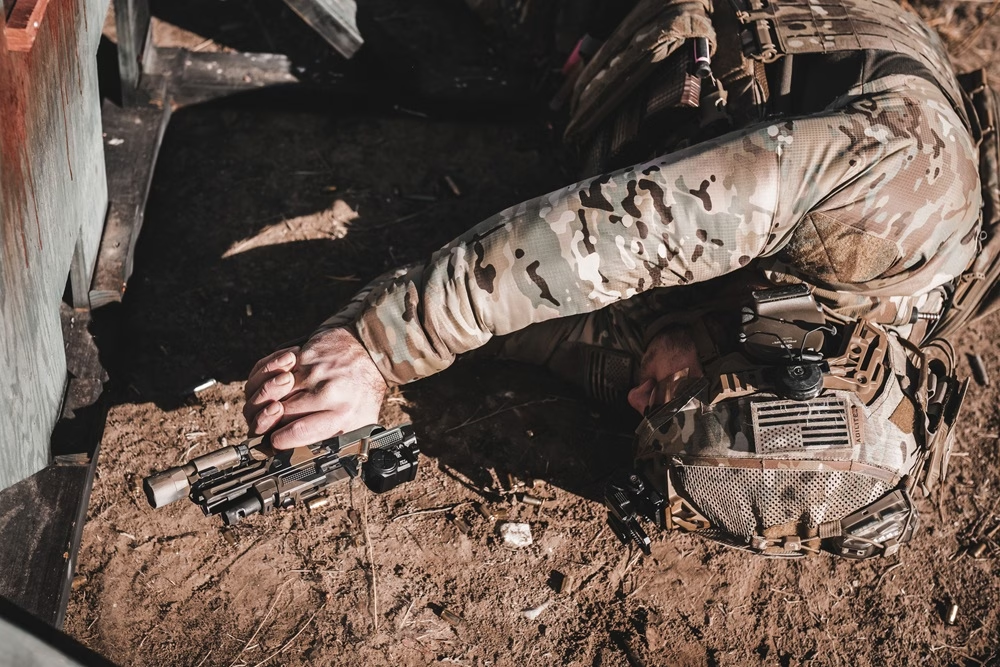
Durability
A larger objective lens means the possibility of it getting scratched or damaged during strenuous use is increased due to its larger surface area. If your optic lens does get scratched or damaged, depending on the severity, your reticle image could become distorted, making proper target acquisition a challenge. Thankfully, with modern optics being as durable as they are, it’s unlikely that you’ll irreparably damage your optic, but it’s still something to think about whenever you’re training, especially if you do so in harsh conditions.
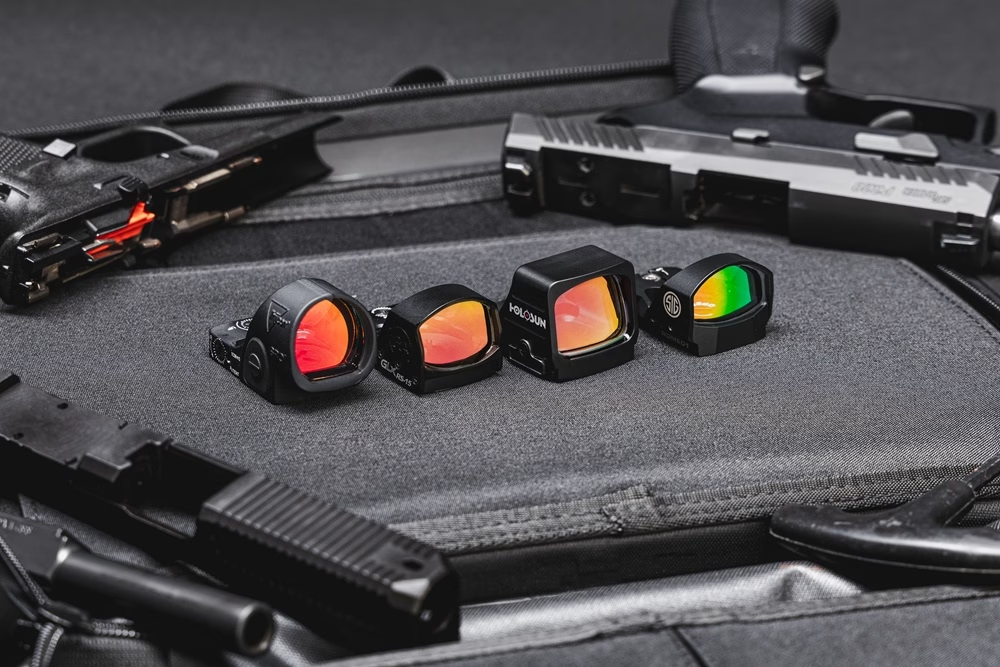
Choosing the Right Optic
Just like we mentioned earlier, when it comes to choosing an optic, it’s important to take your needs and preferences into consideration before pulling the trigger on one. Ultimately, there is no one pistol optic that can be called the ‘best’, but there are several available that can potentially align with your needs.
If you’re building a dedicated competition gun, having a large window is best. Optics like the Holosun 507COMP come equipped with a large 1.1- x 0.87-inch (27.9mm x 22mm) window and come standard with their Competition Reticle System (CRS), allowing you to cycle between multiple different reticles. Meanwhile, other reflex sights like the SRO from Trijicon also have a large lens, measuring .98 x .89 inches (25mm x 22.5mm). Although they can’t project multiple reticles, they’re available with multiple reticle sizes including a 5-, 2.5-, and a 1-MOA dot reticle.
For concealed carry, you’ll want to find an optic that strikes a nice balance between window size and concealability. Popular models like the Trijicon RMR, Holosun HS507C, and the Primary Arms Optics SLx® RS-10 and GLx® RS-15 are all solid options that cater to everyday carry.
Are Closed Optics a Viable Option?
In short, of course they are. Closed emitter red dot sights, while they do have more constrictive FOVs compared to open-emitter optics, can still boast large sight windows and wide FOVs that make them conducive for just about every application. Plus, their design gives them an edge in terms of overall durability too.
For instance, optics like the Trijicon RCR, an optic typically viewed as an enclosed version of the RMR, has a sizeable 0.88- x 0.64-inch (22m by 16mm) objective lens that’s ever so slightly larger than the RMR Type 2’s 0.87- x 0.63-inch (22mm x 16mm) objective lens. Other popular enclosed optics like the Aimpoint® Acro P-2 and Steiner MPS have respectable objective lens sizes as well, with them having a 0.59 x 0.59-inch (15mm x 15mm) and 0.83 x 0.63-inch (21mm x 16mm) window, respectively.
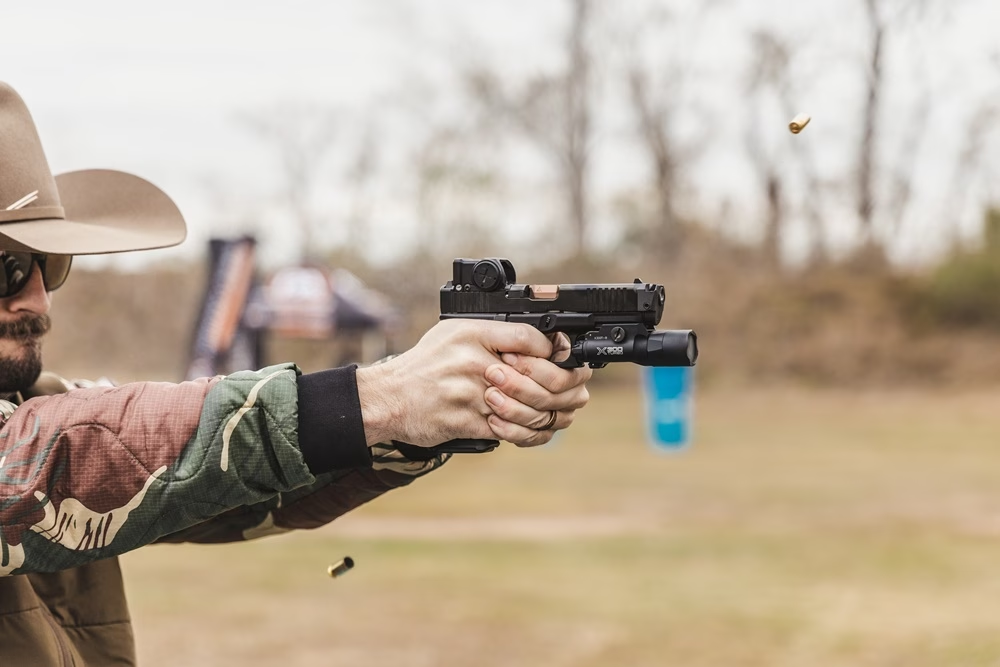
Primary Arms Optics PLx® HTX-1™
Speaking of enclosed emitter pistol optics, one that’s worth mentioning is the Primary Arms Optics PLx HTX-1 red dot sight. While PAO is known for crafting an assortment of mini-reflex sights, they’ve recently stepped into the enclosed emitter pistol red dot scene with the revolutionary HTX-1, their first American made optic.
While it may appear as just another pistol red dot sight, it boasts incredible versatility. Despite being an enclosed optic, the HTX-1 has a sizable 19.5mm x 15.2mm (around 0.77- x 0.60-inch) objective lens, giving it a wide FOV that’s on par with many of the optics mentioned above. Additionally, HTX-1 is special in that it’s compatible with nearly every common mounting footprint. Rather than mounting directly to your pistol’s slide, the HTX-1 mounts to its own patented modular chassis system, giving it a naturally low centerline, and the ability to cowitness with standard iron sights.
For even more utility, the HTX-1 comes with the venerable ACSS® Vulcan® Reticle System. Much like how the HTX-1 is the only optic of its kind, the ACSS Vulcan is the only reticle of its kind. Rather than just projecting a standard dot, the Vulcan reticle is comprised of both a 4-MOA center dot and a 240-MOA outer circle that’s only visible when your aim is off-center, giving you the ability to make quick adjustments to get on target as fast as possible. Still, if you’d prefer, it’s available with just a 4-MOA dot too.
Conclusion
Whenever you’re looking at adding an optic to your handgun, it’s critical to look at every aspect of it to ensure it’s going to offer the performance and capabilities you’re looking for. And as important as it is, the size of the objective lens is something that often gets overlooked. Your reflex sight’s objective lens, aside from being the surface your reticle is collimated onto, is one of the key determinants of how wide your FOV is. As such, it’s important to consider it when searching for your next optic.
Choosing an optic ultimately comes down to finding the one that best caters to your intended application. For dedicated competitive use, optics with larger sight windows will offer the widest FOV and have all of the benefits mentioned above, though this comes at the cost of having a larger optic. For concealed carry, smaller optics are easier to conceal, but won’t offer the same level of performance as larger ones.
As such, balance is key, as there are a plethora of options in between both extremes that can suit each individual’s needs. So, regardless of what size optic you go for, the right one will dramatically enhance your accuracy and situational awareness, making them some of the greatest accessories you can add to your pistol setup.
